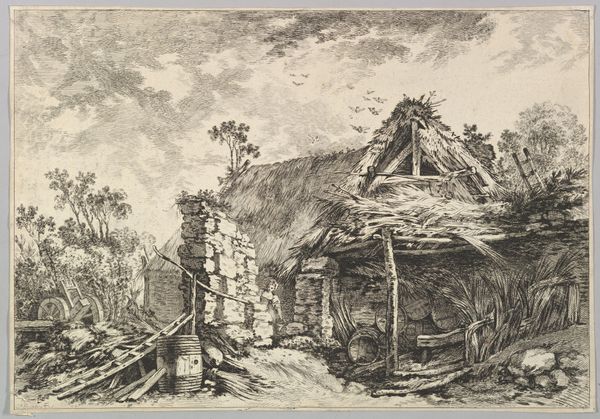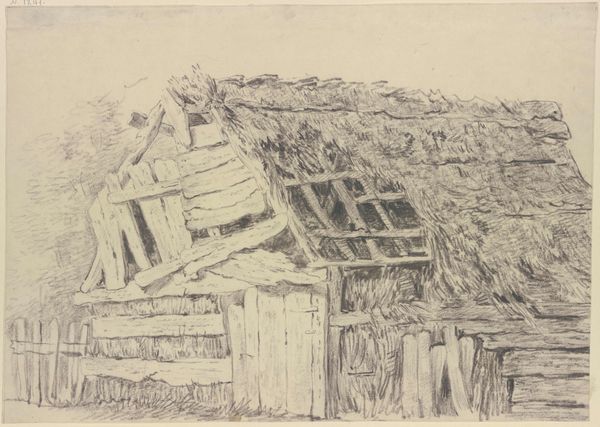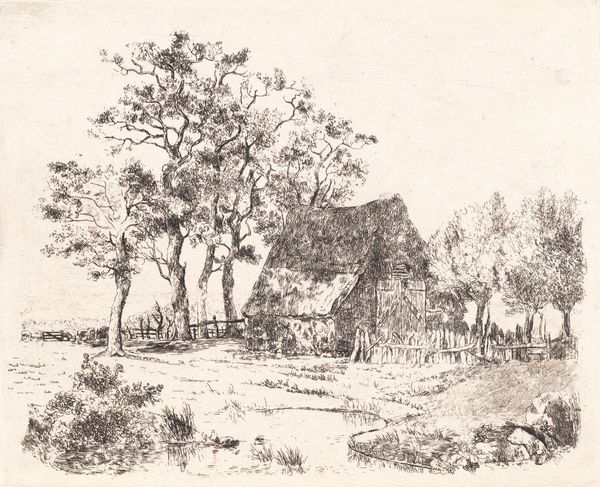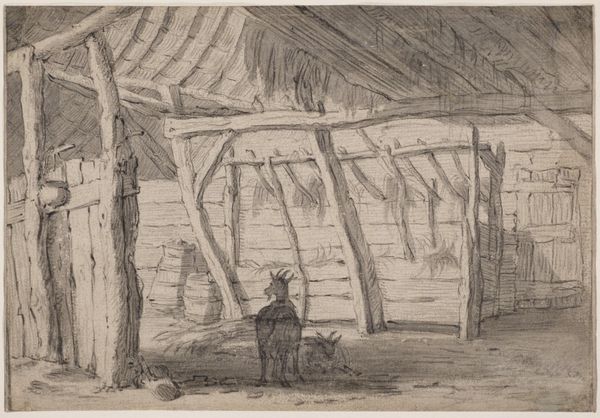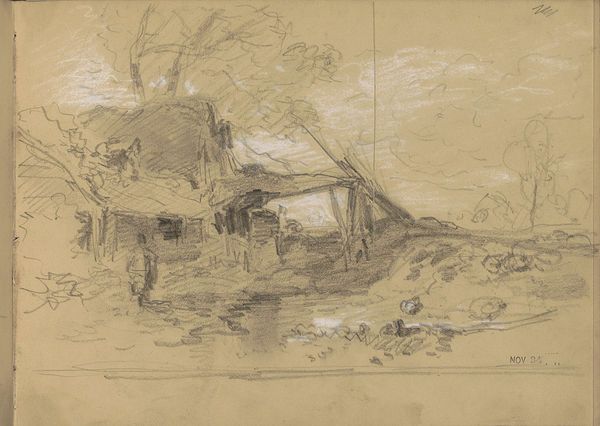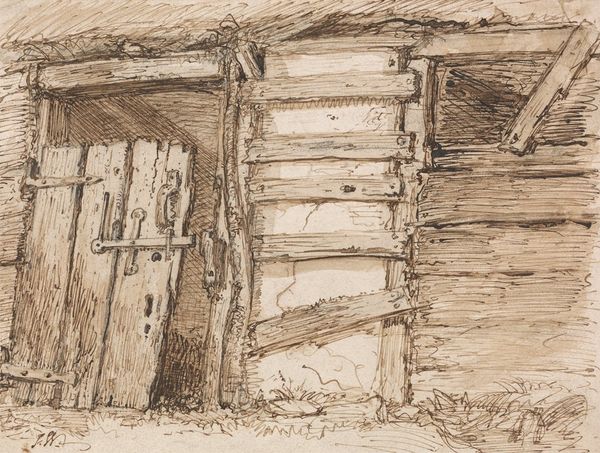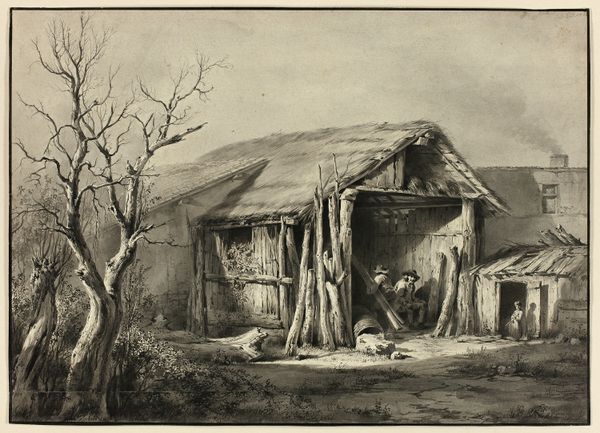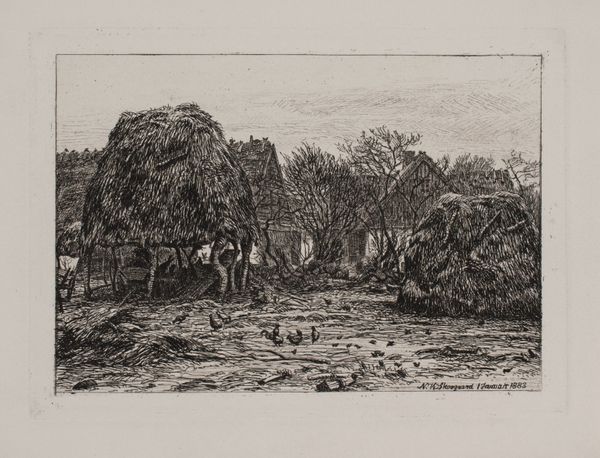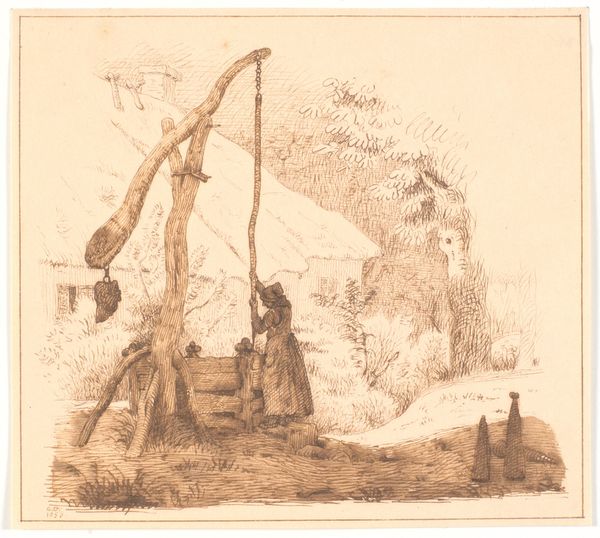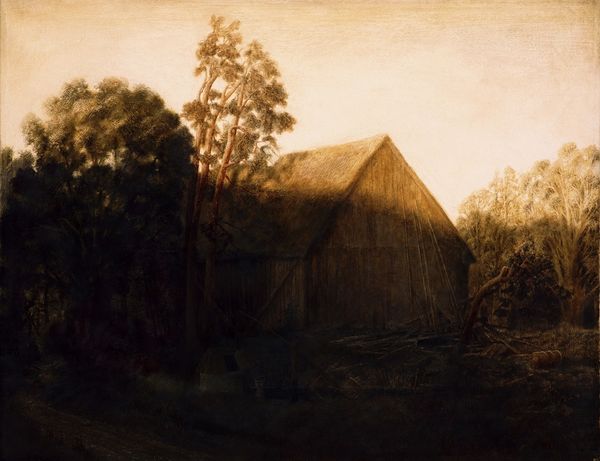
drawing, print, pencil
#
drawing
# print
#
pencil sketch
#
landscape
#
pencil
#
genre-painting
Dimensions: Overall: 18 3/4 x 21 1/8in. (47.6 x 53.7cm) frame: 24 x 30 in. (61 cm)
Copyright: Public Domain
Curator: Constant Troyon rendered "The Workshop of a Wooden Shoe Maker" between 1833 and 1838 using pencil on paper. Editor: It's surprisingly inviting, isn't it? Dark and cluttered, yet it evokes a sense of cozy industry, like stepping back in time and smelling sawdust. Curator: Precisely! And that's quite telling, considering the Industrial Revolution's nascent stages during that period. Think about how images like these might serve as a commentary on a world that's quickly moving away from such artisanal trades. Editor: The image is deeply involved with gender, as well. Consider how workshops, historically, served as public learning and gathering spaces almost entirely excluded to women, which emphasizes both women’s labor contributions behind-the-scenes and broader issues regarding representation. Curator: Interesting! For me, I'm drawn to the interplay of light and shadow. Troyon manages to create depth using just pencil, conjuring textures that I swear I can feel through my fingertips. Editor: But this workshop wasn’t a timeless sanctuary, despite the image’s alluring aesthetics, and as viewers, we should never valorize labor exploitation in service of nostalgia. Wooden shoes aren't exactly haute couture, are they? Curator: Oh, but every so often a utilitarian object does make a star turn! It seems to celebrate a way of life and make a statement on what progress meant – or perhaps more aptly, on what was lost with it. What is preserved through representation also implies how certain experiences or forms of knowledge are often unwritten by history, while these very spaces are now preserved by art spaces like the Met in NYC. Editor: That preservation aspect is vital, of course. The depiction acts almost like visual anthropology—a record of an environment fast disappearing even as he drew it. Curator: And he's not romanticizing perfection either, it’s got rough edges, imperfections, the little details. What I like to imagine in the artist is that he felt a genuine admiration for this craft, and these craftsfolk, you can observe and tell by all of his marks. Editor: I agree entirely, despite my cynicism. It's the intimacy, the sheer attention to detail that elevates it, don’t you think? Curator: Absolutely. Editor: So here is to finding our way, as they did, between art and work.
Comments
No comments
Be the first to comment and join the conversation on the ultimate creative platform.
